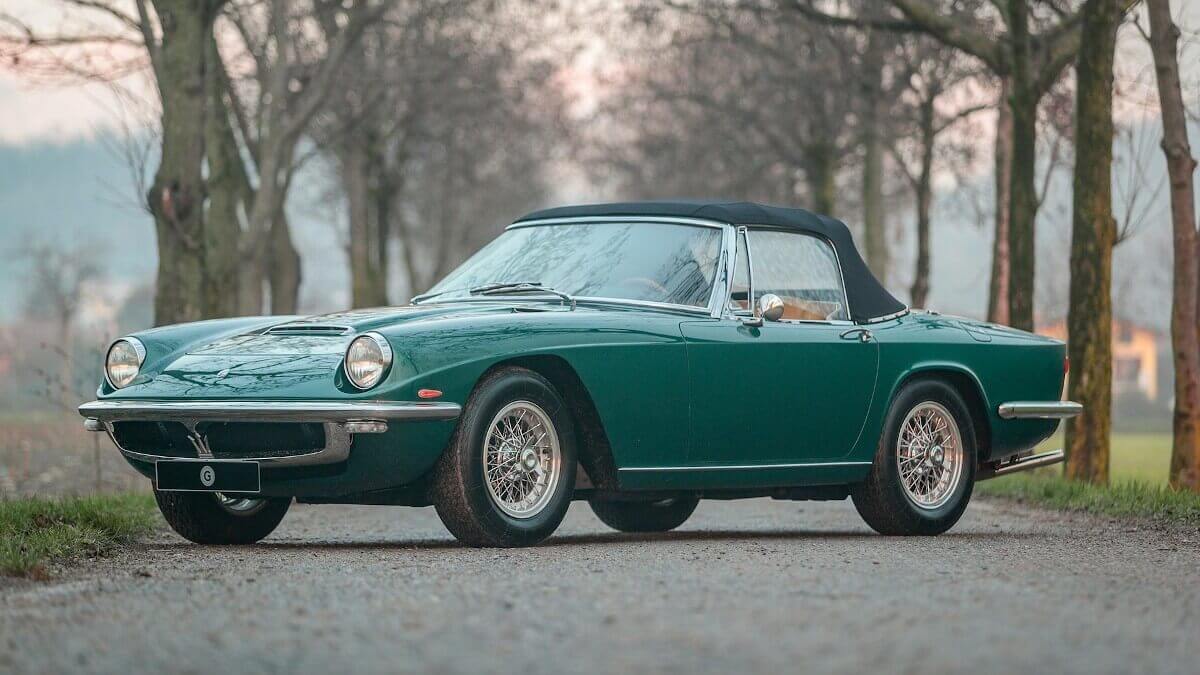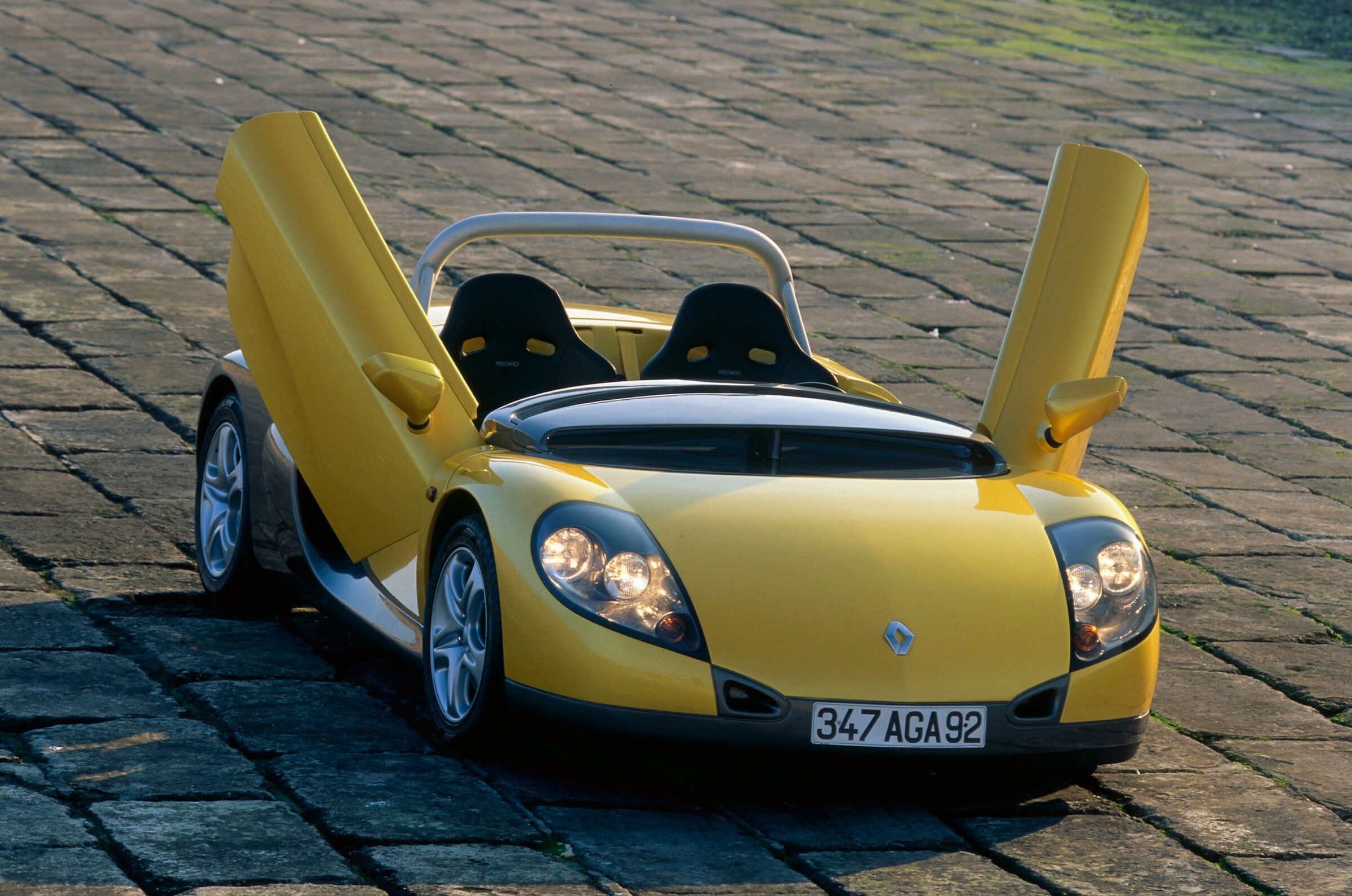Maserati Mistral Spyder
In the early 1960s, Maserati began development work on a successor model to the 3500 GT under the project code AM 109, based on the Jaguar E-Type, which was presented in Geneva in 1961 and was greeted enthusiastically by potential customers. Under the direction of technical director Giulio Alfieri, a completely new chassis was developed with a tubular steel frame made of rectangular tubes, to which a box frame was attached at the rear. Suspensions were taken from the previous model, but the wheelbase was about 20 centimeters shorter. Above this, Pietro Frua in Turin created a coupé bodywork with vertical headlights in flared fenders, a cooling air opening below the chromed front bumper and a rising side window line typical for Frua designs. Inside, the car initially only offered space for two people. In later model years, Maserati added two extra emergency seats in the rear at customer’s request. The new model made its debut at the 1963 Turin Motor Show as the ‘3500 GTI 2posti’. Eventually the sports car went into production with this name. It wasn’t until three years later, in the middle of production, that the model name was changed to Mistral, which was suggested by the French Maserati importer Colonel John Simone in reference to the wing of the same name blowing in the Rhône Valley. This marked the beginning of a tradition that continued until the 1990s, under which Maserati models were given names of famous winds.
The engines and chassis of the 3500 GTI 2posti/Mistral were built directly at Maserati in Modena. Then the chassis were loaded onto trucks and transported to Carrozzeria Maggiora in Turin, where the bodies were produced and then joined to the chassis. Then the cars were loaded back on trucks and delivered back to Modena to the Officine Padane. There they received their paintwork, windows, electrics and interior fittings. Back at Maserati, the engines, gearboxes, brakes and suspensions were finally installed. This type of production was complex and therefore cost-intensive. However, it was retained when the two-seater Spyder variant was added to the range in 1965, parallel to the coupé. Both body variants were offered by Maserati until 1970, but their popularity among customers declined significantly from 1966 with the introduction of the Ghibli, which was designed by Giorgetto Giugiaro. As a result, only 828 coupés and 123 Spyder were produced.
































Initially, Maserati offered only the slightly revised straight six-cylinder engine with a capacity of 3.5 liters from the previous model, which, as in the late 3500 GTI and 3500 GTI S (later called ‘Sebring’), produced 173 kW/235 hp. From 1964, the displacement was increased to 3.7 liters, which resulted in a power increase to 180 kW/245 hp. Two years later the range was extended by a four-liter version with 188 kW/255 hp, which was available at an extra charge. The Mistral is the last Maserati model with an inline engine. All later cars of the brand show a cylinder arrangement in the V.
We have already mentioned above how rare the Mistral as a Spyder. However, the fact that there was still a subdivision within the 123 cars built can be seen from the above paragraph. Of course the most powerful engine could also be ordered for the open-top model, which happened only 37 times. Such a vehicle is currently available for sale at the classic car dealer Girardo & Co. It was built in 1966 and was originally delivered to Rome in the color ‘Argento Auteuil’ (silver) with black leather interior. The options ordered by the first owner included the four-liter engine and the rare hardtop in body color. After a few years in Austria, this Mistral returned to Italy, where it was completely restored at Bacchelli & Villa, painted dark green and upholstered with beige leather. From 2012 to 2016 the vehicle belonged to a major car collection in Milan and since then to the current German owner. Girardo & Co. only quotes the price for this beautiful classic car on request.
Images: Girardo & Co., Cymon Taylor Productions




